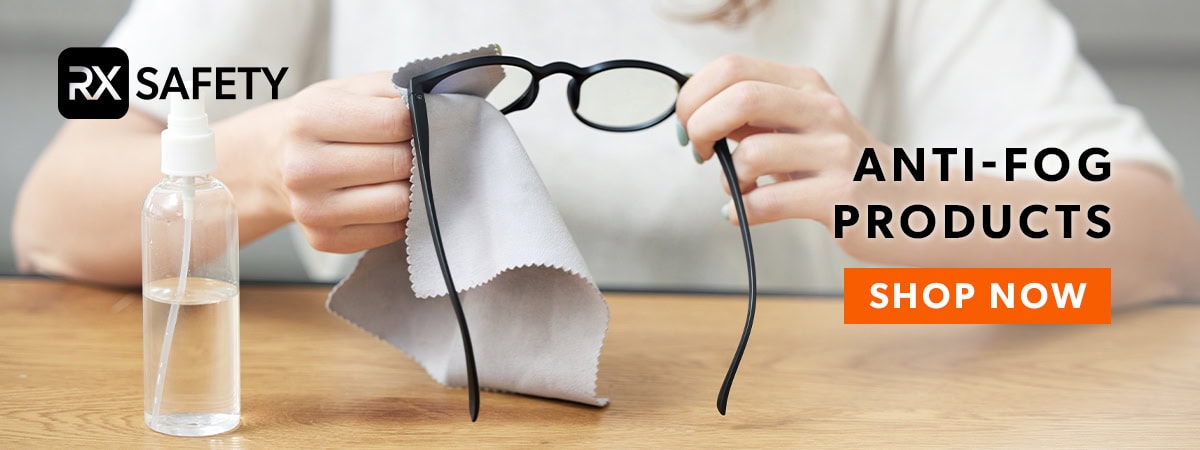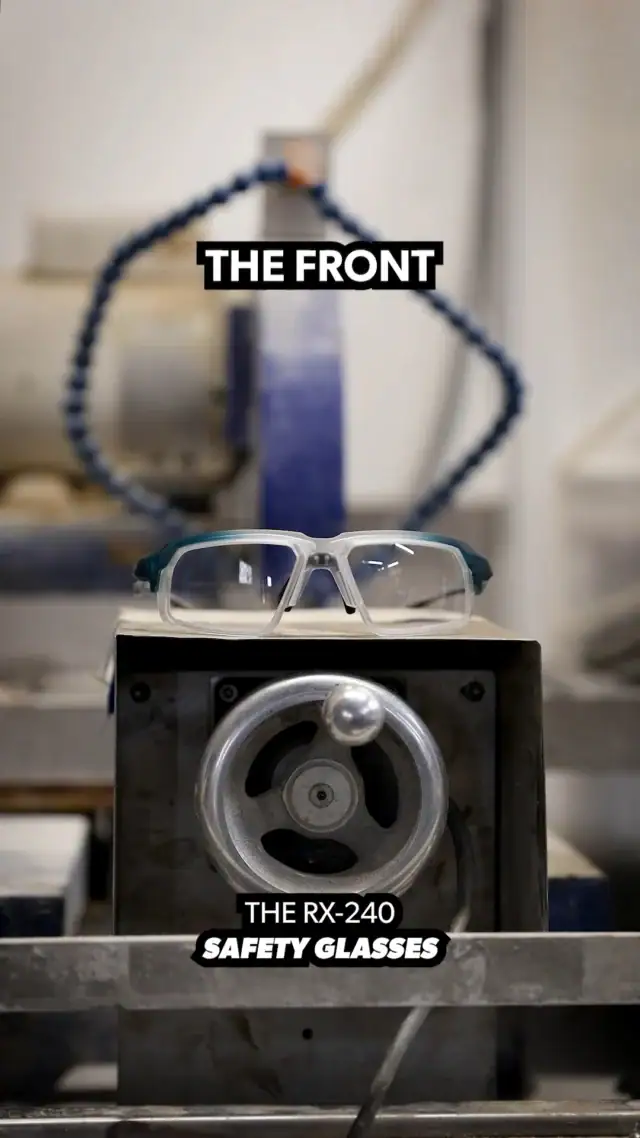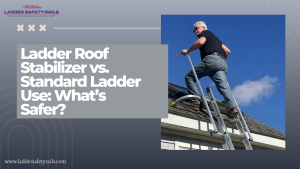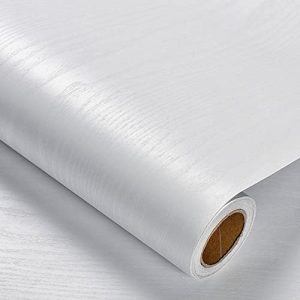Have you ever struggled to see clearly because your safety glasses fogged up at the worst moment? It’s frustrating, distracting, and can even be dangerous when you need clear vision the most.
But what if you could stop that annoying fog from building up in the first place? You’ll discover simple and effective ways to keep your safety glasses fog-free. Imagine working with confidence, knowing your vision won’t get clouded by fog.
Keep reading to find out how easy it is to protect your eyes and stay safe.
Causes Of Fogging
Fogging on safety glasses happens when tiny water droplets form on the lenses. These droplets block clear vision and can be dangerous in many work settings. Understanding the main causes of fogging helps prevent it effectively. Several factors contribute to this common problem.
Temperature Differences
Fog forms when warm air meets a cold surface. Safety glasses often sit cooler than the air around them. Warm breath or body heat hits the cooler lenses. This causes moisture in the air to condense into tiny droplets. The bigger the temperature gap, the faster fog appears.
Moisture And Sweat
Body sweat adds moisture close to the glasses. When sweat evaporates, it increases humidity near the lenses. Breathing also releases moisture into the air inside the glasses. This extra moisture easily condenses on the cooler lens surface, causing fogging.
Poor Ventilation
Glasses that do not allow air to flow trap moisture inside. Without air movement, moisture builds up quickly. This trapped moisture creates fog on the lenses. Proper ventilation helps keep the inside of glasses dry and clear.

Credit: rx-safety.com
Choosing The Right Glasses
Choosing the right safety glasses is key to preventing fogging. The right pair improves comfort and vision. Several features make glasses less likely to fog up. Consider these factors before buying your next pair.
Anti-fog Coatings
Anti-fog coatings reduce moisture buildup on lenses. They create a thin layer that stops water droplets from forming. This keeps your vision clear in humid or cold environments. Many safety glasses now come with this coating. Look for glasses labeled with “anti-fog” or “fog-resistant.”
Ventilated Frames
Frames with vents improve air circulation around the lenses. This airflow helps reduce fogging by allowing moisture to escape. Ventilated frames come in different styles and sizes. Choose frames with vents that do not compromise protection. Proper ventilation keeps glasses dry and comfortable.
Material Considerations
Lens material affects fogging and durability. Polycarbonate lenses resist impact and fog less than glass. Some plastic lenses have better anti-fog properties. Frame materials also matter. Lightweight materials like nylon reduce heat buildup. Pick materials that suit your work environment and comfort needs.
Daily Maintenance Tips
Proper daily maintenance is essential to keep safety glasses fog-free and functional. Regular care helps extend their lifespan and maintain clear vision. Follow these simple tips to ensure your safety glasses stay in top condition.
Cleaning Techniques
Always clean your safety glasses after use. Use a microfiber cloth to remove dust and smudges. Avoid using paper towels as they can scratch the lenses. Regular cleaning prevents dirt buildup, which can contribute to fogging.
Using Soap And Water
Wash your glasses with mild soap and lukewarm water. Gently rub the lenses to remove oils and residue. Rinse thoroughly and dry them with a soft, lint-free cloth. This simple method creates a thin film that reduces fogging.
Avoiding Harsh Chemicals
Never use ammonia or abrasive cleaners on your safety glasses. These chemicals can damage anti-fog coatings and weaken the lenses. Stick to gentle cleaning solutions to preserve the quality of your glasses.
Diy Anti-fog Solutions
Foggy safety glasses can be a real hassle, especially when you need clear vision the most. Luckily, you don’t always have to buy expensive anti-fog products. Several DIY solutions use common household items to keep your lenses clear and fog-free.
Homemade Sprays
You can create your own anti-fog spray using simple ingredients like water, dish soap, and glycerin. Mix a few drops of dish soap with water and add a teaspoon of glycerin to the solution. Spray it lightly on your lenses and wipe gently with a soft cloth.
This mixture forms a thin, invisible layer that prevents moisture from sticking. It’s quick to make and easy to apply before you start your work or sports activity. Have you ever tried a homemade spray and noticed how long it actually lasts?
Shaving Cream Method
Applying a small dab of shaving cream on your lenses can also keep fog away. Spread the cream evenly over the glass surface, then wipe it off with a clean, soft cloth until the lenses are clear.
The residual film left behind helps prevent condensation. It’s a simple trick that many professionals swear by. Next time your glasses fog up, consider this quick fix and see how it performs under humid conditions.
Using Vinegar Or Toothpaste
White vinegar or non-gel toothpaste can serve as effective anti-fog agents. Dab a tiny amount on your lenses and rub it gently, then rinse with water and dry with a microfiber cloth.
Both vinegar and toothpaste remove buildup that attracts moisture. This method also cleans your lenses, killing two birds with one stone. Would you experiment with these everyday items next time fogging becomes a problem?
Commercial Anti-fog Products
Commercial anti-fog products offer a simple way to keep safety glasses clear. These products create a thin layer that stops fog from forming. They work well for workers, athletes, and anyone needing clear vision in humid or cold conditions. Using these products saves time and improves safety by keeping vision sharp.
Sprays And Wipes
Sprays and wipes are popular choices for anti-fog protection. They are easy to apply and quick to dry. Sprays cover the lens evenly with a fine mist. Wipes combine cleaning and anti-fog treatment in one step.
- Sprays allow control over the amount applied.
- Wipes are handy for on-the-go use.
- Both leave a thin, invisible film.
Apply sprays or wipes before using glasses for best results. Reapply as needed to maintain clarity.
Gel Applications
Gels provide a longer-lasting anti-fog effect. They form a stronger coating that resists moisture better. Gels usually need a few minutes to dry fully.
- Apply a small amount evenly over the lens.
- Rub gently to spread the gel thinly.
- Allow drying time for best protection.
Gels are ideal for extended wear or intense work conditions.
Choosing Reliable Brands
Pick well-known brands for better results. Trusted brands use tested formulas that protect lenses without damage. Look for products that fit your lens type and activity needs.
- Check for compatibility with plastic or glass lenses.
- Read user reviews for real-world performance.
- Choose products with clear instructions.
Reliable products keep safety glasses fog-free longer and keep lenses safe.

Credit: www.safetyandhealthmagazine.com
Proper Wearing Practices
Proper wearing practices can make a significant difference in preventing fogging. By ensuring a snug fit and managing moisture, you can keep your safety glasses clear. Here are some essential tips to follow:
Adjusting Fit For Airflow
Ensure your safety glasses fit securely but not too tight. A slightly loose fit allows air to circulate, reducing fog buildup. Look for models with adjustable nose pads or straps. These features help create a small gap for airflow without compromising protection.
Avoiding Face Masks That Trap Moisture
Face masks can direct warm air toward your glasses. Use masks with a snug fit around the nose to reduce this. Masks with adjustable nose wires are ideal. They prevent warm air from escaping upward, keeping your lenses fog-free.
Regular Breaks To Reduce Fog
Take short breaks to allow your glasses to ventilate. Remove them carefully and wipe off any moisture. This simple practice can keep your vision clear and your glasses in good condition.
Advanced Tips For Specific Environments
Applying anti-fog sprays or wipes helps reduce moisture buildup on safety glasses. Ventilated frames and proper fitting also improve airflow, preventing fog from forming in humid or cold conditions.
Foggy safety glasses can be a real headache, especially in demanding environments where visibility is crucial. Whether you’re working in cold climates, humid spaces, or transitioning between indoor and outdoor settings, understanding specific strategies for each situation can make all the difference. Below, you’ll find tailored tips to help you keep your safety glasses crystal clear no matter where you are.Cold Weather Strategies
In cold weather, fogging often happens due to the difference in temperature between your face and the surrounding air. To combat this:
- Pre-warm your glasses:Before heading out, warm your safety glasses slightly by holding them near a heater or placing them in your pocket.
- Use anti-fog sprays:Choose a spray specifically designed for cold environments and apply it evenly across the lenses.
- Adjust your mask fit:If you’re wearing a mask, ensure it’s snug around your nose to prevent warm air from escaping upwards.
Have you ever noticed how ski goggles rarely fog up? Many of them use double-layer lenses, which you might consider upgrading to for extreme cold conditions.
High Humidity Solutions
High humidity makes fogging worse because moisture clings to the lenses. Here’s how to tackle this challenge:
- Opt for vented safety glasses:Glasses with built-in ventilation allow air to circulate, reducing moisture buildup.
- Keep a microfiber cloth handy:Regularly wipe your lenses to remove condensation without scratching them.
- Apply a soap layer:Rub a tiny amount of dish soap on the lenses, then buff it off. This creates a barrier that reduces fogging.
Humidity can be relentless, but pairing anti-fog coatings with proper ventilation can make your workday much smoother.
Indoor Vs Outdoor Settings
The transition between indoor and outdoor environments often causes safety glasses to fog up. To minimize this:
- Use temperature-neutral glasses:Look for lenses designed to adapt quickly to changing conditions.
- Store glasses smartly:Keep them in a case or pouch when moving between areas to prevent sudden temperature shifts.
- Switch to hydrophobic lenses:These repel moisture and are ideal for environments with frequent transitions.
Have you ever stepped outside on a cold day and suddenly couldn’t see? By planning ahead and using tools like anti-fog wipes, you can avoid frustrating interruptions.
What’s your go-to trick for keeping your safety glasses fog-free? Share your insights and let others learn from your experiences!

Credit: rx-safety.com
Frequently Asked Questions
Why Do Safety Glasses Fog Up?
Safety glasses fog up due to temperature differences, humidity, and moisture from breath or sweat. This creates condensation on the lenses.
How Can I Prevent Fogging On Safety Glasses?
Use anti-fog sprays or wipes, ensure proper ventilation, and select glasses with anti-fog coatings for effective prevention.
Do Anti-fog Sprays Work On Safety Glasses?
Yes, anti-fog sprays work by creating a thin layer that reduces condensation and keeps lenses clear in humid conditions.
Are Anti-fog Safety Glasses Worth It?
Anti-fog safety glasses are worth it as they enhance visibility, reduce disruptions, and improve safety in challenging environments.
Conclusion
Keeping safety glasses clear helps you see and work better. Use simple tricks like cleaning lenses often and using anti-fog sprays. Good fit and proper ventilation also stop fog from building up. These easy steps save time and keep your eyes safe.
Clear vision means safer work every day. Stay comfortable and focused with fog-free glasses. Small changes make a big difference in safety. Remember, clear glasses protect your eyes and improve your work.








